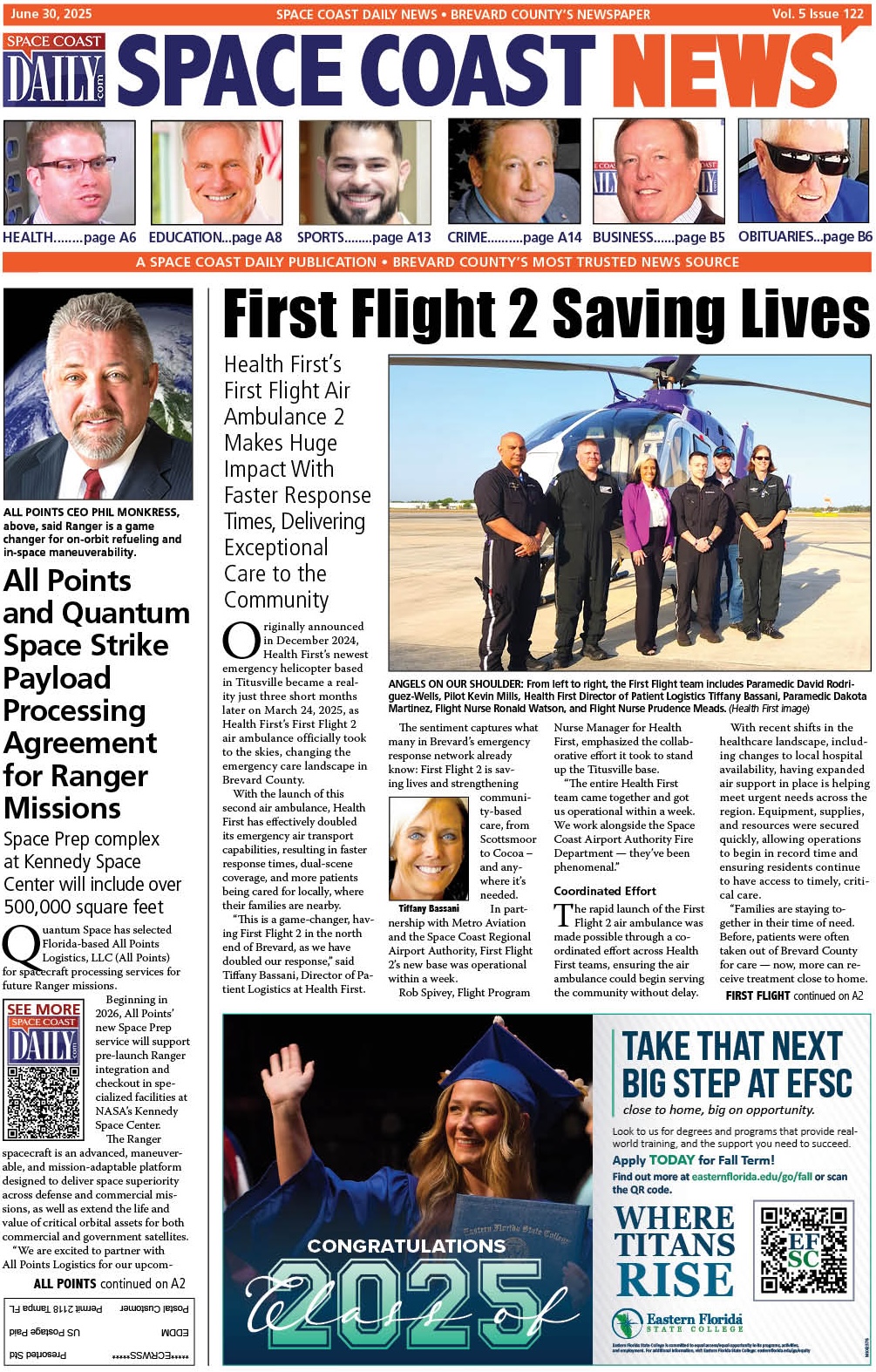The Rise of China’s Space Program: Key Achievements and Future Plans
By Space Coast Daily // March 11, 2025

China space news continues highlighting the nation’s growing influence in space exploration, with ambitious missions and groundbreaking achievements capturing global attention.
From lunar exploration to advancements in space station technology, China is actively working to establish itself as a leader in the modern space race.
This article explores the latest updates on China’s space program, including recent milestones, upcoming missions, and their impact on the future of space science. As developments accelerate, China space news provides key insights into how these missions are shaping the next era of space exploration.
Overview of China’s Ambitious Space Exploration Goals
China has set significant milestones for its space program, aiming to solidify its status as a global space leader. Recent updates highlight key missions in lunar exploration, planetary research, and space station advancements.
Significance of China’s Space Program in the Global Context
China’s space program positions the nation among top competitors in space exploration. Recent reports highlight how strategic partnerships—such as agreements with Russia for the International Lunar Research Station—boost its collaborative potential. As of 2023, over 30 nations have expressed interest in partnering with China on its space initiatives. These contributions drive scientific progress within the global space community and strengthen international technological exchanges.
Recent Achievements and Current Missions
China continues advancing its space program with new milestones and projects. Recent updates highlight progress in lunar exploration, Mars research, and space station operations, showcasing its expanding role in global space science.
Lunar Exploration
China’s Chang’e-5 mission retrieved 1.731 kilograms of lunar samples in 2020, providing critical data for geological studies. A Chinese news agency reports that the Chang’e-6 mission will collect additional samples from the Moon’s far side by 2025. The ongoing Chang’e-7 mission investigates lunar resources, including water ice, which could support future research bases.
Mars Exploration
The Tianwen-1 mission successfully placed a rover, Zhurong, on Mars in May 2021. Zhurong traveled nearly 2 kilometers, analyzing the planet’s surface and atmosphere. Recent updates from a Chinese News agency confirm extended operations for Tianwen-1, ensuring further data collection for Mars’s topography and climate studies.
Space Station Development
The Tiangong space station, completed in late 2022, now supports long-term crewed missions. The Shenzhou-16 crew is conducting over 100 scientific experiments, including microgravity research. Plans involve expanding the station with additional modules to enhance research capabilities and support a wider range of scientific studies in orbit.
Future Missions and Long-Term Goals
China’s space program continues expanding with ambitious plans for future missions. These initiatives reflect strategies to strengthen its position in global space exploration.
Asteroid Missions
The country is developing plans for an asteroid sample-return mission with ambitions to target near-Earth objects – including candidates like 2016 HO3. The timeline for this mission is tentative, with the project still in its early development stages and subject to further refinement. The mission will focus on collecting surface samples and analyzing the asteroid’s composition to enhance understanding of asteroid dynamics and potential threats. Early development phases are underway, with plans to refine mission strategies and technological requirements. This initiative represents a significant step in advancing planetary research and deep-space exploration.
Planetary Exploration
Efforts are also advancing toward exploring the outer planets and moons of the solar system. A planned mission to Jupiter will study Jupiter’s atmosphere, magnetosphere, and moons, focusing on understanding the gas giant’s complex environmental dynamics. Another mission focuses on collecting data from Mars’s deeper layers. These projects align with China’s goal to broaden interplanetary research and establish a comprehensive understanding of planetary systems.
Human Spaceflight
China is planning a crewed lunar mission that will be completed by 2030. The mission aims to land astronauts on the moon for detailed exploration and research. Advances in the Tiangong space station will support long-term human presence in space. Ongoing improvements in crewed spacecraft technology are being developed to ensure the success of these missions. This initiative marks a major step toward expanding lunar exploration capabilities.
Technological Innovations
China’s space exploration efforts emphasize advancing technologies to achieve ambitious outcomes. Innovations in launch vehicles, satellite systems, and spacecraft capabilities drive global interest in China space news.
Launch Vehicles
Advancements in propulsion and modular designs enhance launch vehicle reliability. The Long March series supports a wide range of missions, with the Long March 5B capable of deploying 25-ton payloads to low Earth orbit. Upgrades to the Long March 9 support planned crewed lunar missions and interplanetary exploration. This heavy-lift vehicle is engineered to carry payloads exceeding 50 tons, significantly improving long-range mission capabilities.
Satellite Technology
Significant investments in satellite development enhance performance and integration. The Gaofen series of satellites provides high-resolution Earth observations, supporting environmental monitoring and urban planning applications. The Beidou Navigation Satellite System, which has been operational since 2020, delivers precise positioning services comparable to GPS. Advanced satellites now feature AI capabilities, enabling real-time data analysis for space and terrestrial applications.
Spacecraft Capabilities
Spacecraft are designed with extended operational lifespans and modular adaptability. The Shenzhou spacecraft supports crewed missions, while Tianzhou cargo vehicles facilitate resupply for the Tiangong space station. The Chang’e lunar landers showcase technological advancements for operating in harsh environments. Reports from China Global Television Network (CGTN) indicate that future developments will prioritize reusable vehicles, aligning with objectives for Mars exploration and asteroid sample-return missions.
International Collaboration
China collaborates with Russia on the International Lunar Research Station, sharing technological and scientific resources. According to recent China space news, over 30 countries are interested in partnering with China’s space initiatives. These partnerships aim to enable scientific exchanges and mutual advancements in space exploration.
Strategic Vision
China’s space exploration strategy focuses on long-term missions, building global partnerships, and advancing technological capabilities to secure its position as a leader in the space sector.
Timeline
China’s timeline for space missions highlights key milestones. Between 2023 and 2025, objectives include launching Chang’e-6 for lunar sample return, testing asteroid mission equipment, and expanding Tiangong station modules. By 2030, a crewed lunar landing and enhanced Mars studies are planned. Future projects, like the Jupiter exploration and asteroid sample missions, underline China’s strategic goals.
National Impact
Space missions contribute to China’s technological growth, economic development, and global influence. The Beidou System supports domestic industries, while Tiangong innovations strengthen national science programs. According to reports from CGTN, a prominent state-run news network in China, the nation’s active role in international space collaborations draws significant global interest, with over 30 countries willing to partner on cooperative efforts. This momentum is solidifying China’s position in global scientific advancements.
Conclusion
China’s space program has made significant progress, with recent missions like Chang’e-5 and Tianwen-1 reinforcing its growing influence in global space exploration. Advancements such as the Tiangong space station and the Beidou Satellite System establish China as a key player in the industry. Ongoing developments reflect a commitment to ambitious goals, including a crewed lunar mission by 2030 and asteroid sample-return missions by 2025. Future projects are set to maintain this momentum, further expanding China’s role in space science and exploration.












